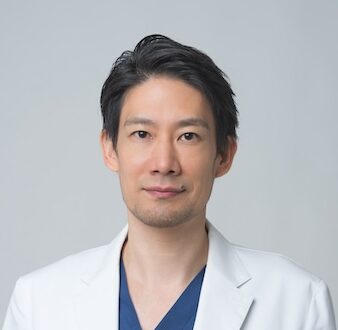



Operation Procedure
Septal Extension, Nasal Tip Plasty, Rhinoplasty, Revisions (Autologous Tissue), Rib Cartilage
施術内容A patient came to us for a revision after having undergone cartilage grafting in the nasal tip and silicone implantation in the nasal bridge at another clinic.
The patient’s request was: “I had nose surgery, but my nasal tip has dropped and looks lower. I also wanted to correct my hump, but it hasn’t improved at all, so I’d like it to be fixed.”
Upon examination, the nasal tip was indeed drooping and slightly collapsed, resulting in a condition known as a “pinched nose.” Additionally, although silicone had been inserted into the nasal bridge, the hump deformity hadn’t been properly treated, so the dorsal hump still appeared when viewed from the side.
What are the issues?
- Incorrect nasal tip reduction
- Cartilage grafting on a weak nasal tip foundation
- Silicone implantation without proper hump correction
To elaborate on these points:
First, regarding nasal tip reduction, it’s common to see cases where the nasal tip cartilage has been carelessly narrowed by simply tying a suture around it, as likely happened in this case. However, this approach doesn’t yield a beautiful nasal tip. In this patient’s case, it resulted in a pinched nose, where the tip appeared overly narrow and pinched.
Secondly, although cartilage grafting was performed on the nasal tip, it not only failed to raise the tip but actually caused it to droop. The forces acting on the nasal tip are stronger than many might expect, and grafting cartilage onto a weak foundation often leads to sagging over time.
Thirdly, the hump, a protrusion in the middle of the nasal bridge, is composed of both bone and cartilage. The appropriate method of correction depends on its size and shape. Failure to address the hump properly before inserting an implant can lead to unsatisfactory results, as seen in this case.
Overall, nasal surgery is highly complex. When done correctly, it not only enhances the nose but also gives the entire face a more three-dimensional appearance, significantly improving the overall facial impression. However, each surgical step requires precision and accuracy, making it a very challenging procedure.
As a board-certified Aesthetic surgeon by Japan Society of Aesthetic Plastic Surgery (JSAPS), which is only available to board-certified plastic surgeons, I perform a wide range of surgeries from initial to revision, so please feel free to contact me anytime for consultation.
Risks and Side Effects:
Swelling, bruising, infection, asymmetry, reversion, deviation, nasal obstruction, difference from the expected image, discomfort, scarring, hypertrophic scars, keloids, etc.

日本形成外科学会専門医
日本美容外科学会専門医 (JSAPS)
日本頭蓋顎顔面外科専門医
日本抗加齢医学会専門医
形成外科領域指導医
元大学病院助教、元CZEN GINZA CLINIC院長。現在は本格派の医師が在籍することで信頼の高い美容外科、ヴェリテクリニックの大阪院院長。過去には札幌医科大学附属病院、がん研有明病院形成外科などの大病院において形成外科・再建外科医として勤務。先天異常、乳房再建、美容外科から再生医療にいたるまで幅広い臨床経験を持つ。専門は顔面・乳房の美容外科、形成外科、アンチエイジング治療。
Akiyo Suzuki M.D.
Board-Certified Plastic Surgeon
Board-Certified Cosmetic Surgeon (JSAPS)
Board-Certified Cranio-Maxillo-Facial Surgeon
Board-Certified Anti-aging Medicine
Certified Instructor in Plastic Surgery
Director of Verite Clinic Osaka, one of the most established and trusted cosmetic surgery clinics in Japan. Former Assistant Professor of Sapporo Medical University Hospital, Former Director of CZEN GINZA CLINIC, Previously worked as a plastic and reconstructive surgeon at major hospitals, including Cancer Institute Hospital JFCR, Ariake.
Has extensive clinical experience ranging from congenital abnormalities and breast reconstruction to aesthetic surgery. Specializes in facial and breast aesthetic and plastic surgery. Also provides a range of anti-aging treatments.
